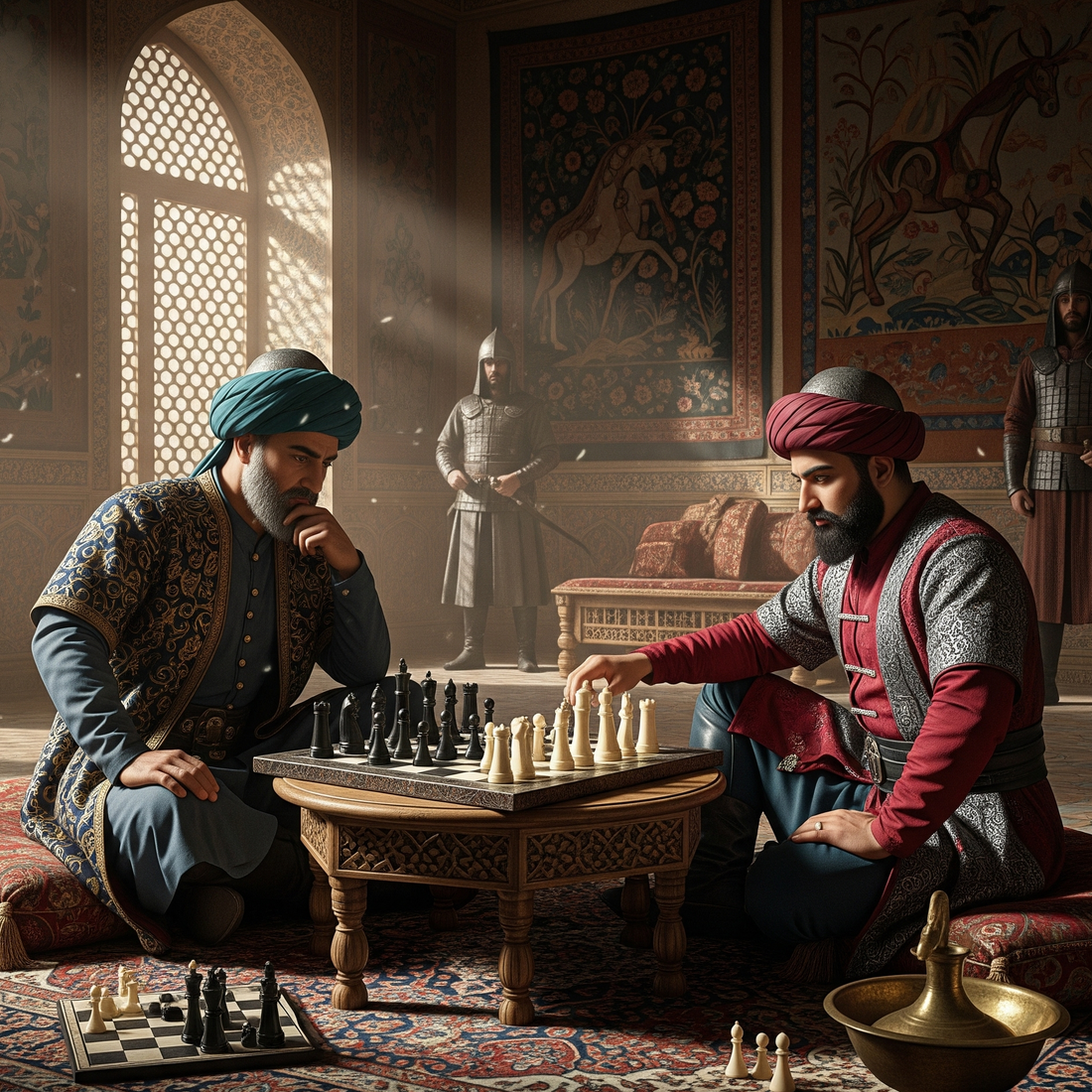
The Game That Conquered the World
Share
From Chaturanga to Checkmate: India’s Gift to the World
Chess is one of the world’s most beloved strategy games. Its story begins in India, with an ancient game called Chaturanga. First recorded around the 7th century CE during the Gupta Empire, Chaturanga was revolutionary for its time. Unlike earlier board games such as checkers or Go, it featured different pieces with unique powers, and victory depended on the fate of a single crucial piece - the king, just as in modern chess.
Historians often link the game’s emergence to India’s mathematical golden age, when the concept of zero was developed.

The Original Board and Rules
Traditional Indian chessboards sometimes featured X-shaped markings on certain squares (a1, a4, a5, a8, d1, d4, d5, d8, e1, e4, e5, e8, h1, h4, h5, h8). These may have been “safe squares” where pieces couldn’t be captured.
However, the exact rules of Chaturanga are not fully known today. Chess historians believe it resembled its successor, Shatranj, but some details—such as the original movement of the gaja (rook) - remain a mystery. So, if you ever get stuck in a game, you could cheekily tell your opponent that nobody truly knows how the rook was meant to move in ancient times!
The Persian and Arabic Chapters
From India, chess traveled to Sassanid Persia around the 6th century CE, where it became part of noble education. There, Chaturanga was renamed Chatrang, and after the Arab conquest, it became Shatranj as Arabic is lacking the “ch” and “ng” sounds.
It was during this era that players began calling out Shāh! (“King!”) when attacking the opponent’s king, and Shāh Māt! (“The king is helpless”) when delivering checkmate. These phrases became part of chess tradition as the game spread further.
In the early Muslim world, Shatranj flourished, with most piece names retaining their Persian roots. Game diagrams often used red and black ink, inspiring the red-and-black sets you’ll see today at Crown and Caravan Chess Crosses into Europe
Chess Crosses into Europe
By the 10th century, chess had entered the Iberian Peninsula through the Moors. It was immortalized in the 13th-century Spanish manuscript Libro de los Juegos, the earliest known European chess text.
During the Middle Ages, exquisitely crafted boards became status symbols, marking chess as a pastime of nobility and refined culture. By the 12th–15th centuries, chess fever swept through Europe’s courts. The game’s popularity was so strong that in 1254, Louis IX of France tried (unsuccessfully) to ban playing for money. The ban was ignored, as even the aristocracy kept enjoying their “forbidden” tournaments. From Romantic Brilliance to Modern Strategy
From Romantic Brilliance to Modern Strategy
By the 1700s, chess was still thriving, played in a flamboyant style now called Romantic chess. Quick, tactical fireworks mattered more than slow, methodical planning, and winning with flair was often valued over winning outright.
But by the mid-19th century, a shift began. Positional play, carefully controlling the board for long-term advantage, took center stage, especially at the London tournament of 1851, often considered the first true international chess tournament.
From its origins in India’s royal courts to the global stage, chess has been a symbol of intellect, creativity, and culture for over 1,500 years. The next time you sit down at the board, remember, you’re part of a story that began on Indian soil and went on to capture the imagination of the entire world.